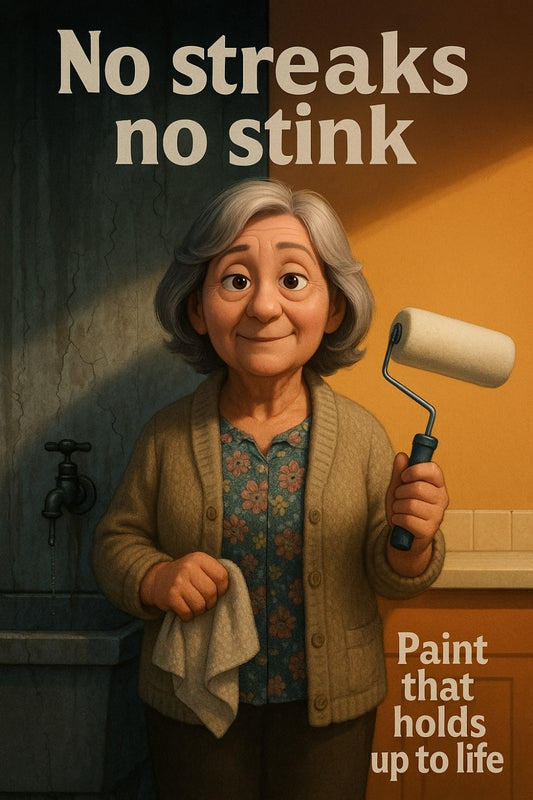
Foam vs Bristle Brushes: Which Should You Use?
Share
Foam vs Bristle Brushes: Which Is Right for Your Painting Project?
Picture this: you've got your Haymes Paint in the perfect shade, ready to bring your space to life. You've masked off the edges, laid down the drop sheets, and your playlist is queued up. But then you realise, "Wait! Do I grab a bristle brush or a foam brush?" Believe me, friend, you’re not alone in this puzzler. These two brushes look simple enough, yet each has its own strengths. Let’s break it down together, shall we?
The Lowdown on Foam Brushes
Foam brushes are the quiet achievers of the painting world. Made of—you guessed it—foam, these brushes are lightweight, super easy to handle, and surprisingly versatile. Here’s what they’re best for:
- Smooth Finishes: Foam brushes excel at delivering a streak-free, smooth surface. If you’re tackling furniture, doors, or cabinets, this tool can give you that professional, even look without breaking a sweat (or your budget).
- Absorbing Paint: The foam is great at soaking up paint, so you can cover more area quickly without pesky drips. But be careful—it’s not designed for heavy, thick paints.
- Detail Work: Need to touch up corners or work with stencils? Foam brushes glide across tight spots with precision.
That said, foam brushes are better suited to smaller, less-intensive jobs. They’re not built to last, which can actually be a plus if you don’t want to bother with cleaning up after you're done. Use it, toss it, and move on to admiring your handiwork.
The Mighty Bristle Brush
Now onto the classic hero of the painting toolkit—the bristle brush. This type comes in two main flavours: natural bristles (like boar or horsehair) and synthetic ones (usually nylon or polyester). While they’re a bit more traditional, they offer plenty of perks:
- Tackling Larger Projects: Bristle brushes shine when you’re working on walls, skirting boards, or any larger surface. They hold more paint and can handle thicker, more luxurious paints effortlessly.
- Great for Textures: Natural bristles especially are known for their ability to catch textures and grooves. If your wall isn’t perfectly smooth or you’re embracing a rustic, textured look, bristle brushes deserve your attention.
- Durable and Reusable: With proper cleaning and care, a good-quality bristle brush can stick with you through project after project. It’s an investment, but one worth making.
The downside? Bristle brushes require a little more skill. You’ll need to watch for brush strokes and clean them properly after use, which can feel like a chore. But if you’re aiming to conquer bigger painting tasks, they’re worth the effort.
When to Choose What
So how do you decide? It all comes down to your project and goals. Here’s a quick cheat sheet:
Reach for a Foam Brush if: You’re covering small, smooth surfaces or working on detail and craft projects. They’re perfect for when you need clean lines and minimal texture.
Stick with a Bristle Brush if: You’re painting walls, large furniture, or uneven surfaces. They’re ideal for when durability and full coverage matter.
And here’s a little tip: there’s no rule saying you can’t use both! Sometimes, a foam brush does the groundwork, while a bristle brush steps in to handle the heavy lifting. Don’t be afraid to experiment and see what works best for you.
Final Thoughts
Choosing between foam and bristle brushes doesn’t have to feel overwhelming. With their distinct strengths, both types of brushes play a unique role in your painting arsenal. Whether you’re refreshing your home office or making over a tired old dresser, having the right tools at your fingertips will make the job smoother and way more enjoyable.
And hey, if all else fails, pop into Strathalbyn H Hardware Paint Shop! We’re always up for a chat and happy to point you in the right direction. Consider us your painting project cheerleaders.
Happy painting! 🎨
Candeece




